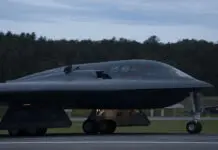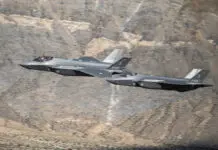The news from Ecuador about the failed delivery of its Russian-made weapon systems in exchange for material of American origin caught attention in Peru, a long-time user of former Soviet (now Russian) technology. The issue had already been discussed just over a year ago when the United States Southern Command urged several Latin American countries to donate them to Ukraine, replacing them with American-manufactured ones. In the case of Peru, the offer brought to light the status of the RSK MiG-29C, of which only 5 single-seaters and 1 two-seater completed their modernization to the SMP standard. However, they are not currently flying.
However, the most tempting option for a potential exchange would lie in the numerous fleet of Mil Mi-8/17/171 helicopters that are part of the three Armed Forces and the National Police of Peru.

Let’s remember that the first Mi-8 “Hip” helicopters arrived in the South American country as humanitarian aid sent by the Soviet Union after the devastating earthquake of 1970. Once the mission was completed, Moscow decided to gift them along with a package of spare parts and accessories and temporarily lend their pilots to train local crews.
Today, the Peruvian Air Force (FAP) is the most experienced in their use, having achieved great operational and technological capabilities, including a maintenance center in Lima. Added to this are the few Mi-25/Mi-35 “Hind” combat helicopters, one of which has started its cockpit modernization process.
Another major user of the “Hip” helicopters is the Peruvian Army (EP), which, like the FAP, has used them in combat in 1981, 1995, and in the war against terrorism.

Following them in experience is the Peruvian National Police, which for decades has included these systems – now the Mi-171 – in its operations against terrorism and riot control in rural areas.
The Naval Aviation Force of the Peruvian Navy (MGP) has also had valuable experience as a user, mainly in the jungle, although its preference is for European or American equipment.
With a presence in Peru for half a century, these aircraft have confirmed their capabilities in various scenarios, including the desert coast, the hot and humid Amazon, and the Andes.
A clear sign of the strong commitment to these helicopters is found in the modern Aeronautical Maintenance Center of the Peruvian Army (CEMAE), which since 2021 has been responsible for the certified repairs of the Mi-17-1B and Mi-171Sh. To all this, the attractive cost/benefit ratio is added, making it unlikely, at least in the short and medium term, that the Peruvian armed forces will decide on a radical change to other systems.
The future? While it is true that the provision of original spare parts is a problem, it is estimated that the aircraft will operate for another 3 to 4 years, at which point the international landscape will need to be analyzed to make decisions.
You may also like: The Saab 340 T-34 of the Argentine Air Force successfully completed its first flight to Antarctica










